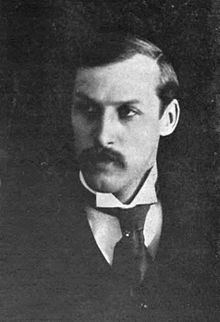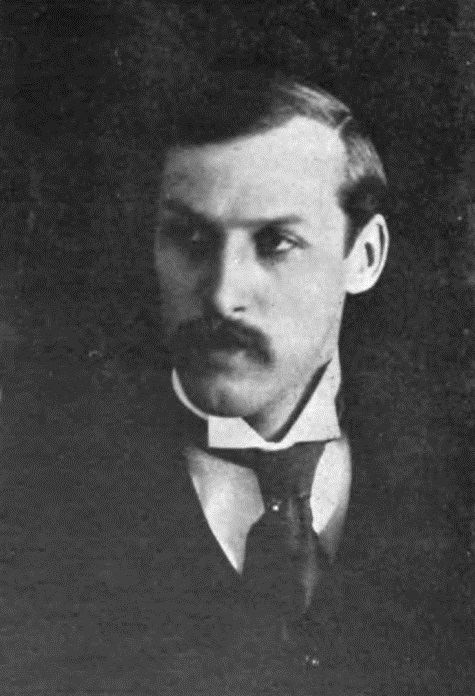Name Arthur Dugmore Role Author | Died 1955 | |
 | ||
Books The Romance of the Be, When the Somme Ran Red, The Romance of the Ne, Nature and the Camera, Blood in the Trenches | ||
Arthur Radclyffe Dugmore (1870-1955) was a Welsh-born pioneering American naturalist and wildlife photographer, painter, print-maker and author. He turned from "hunting to capturing his subjects on paper and canvas."
Contents

Early life
Dugmore was born in Wales. He was elected to The Camera Club of New York in 1902 and presented his work in their exhibitions. In 1902 Dugmore's photography caught the attention of Alfred Stieglitz, the single most important figure in American photography at that time, who published Dugmore's article entitled "Effective Lighting in Bird Photography" and his photogravure of small birds on a branch as illustration in the first issue of Stieglitz' quarterly photographic journal Camera Work. Stieglitz explained that he had chosen Dugmore's photograph because it demonstrated that "even scientific subjects may be given pictorial worth without loss to their scientific value." His photographs were exhibited in London in 1903 at the Royal Photographic Society annual show. In 1905 his work was included in the Lewis and Clark Centennial Exposition held in Portland, Oregon. Dugmore designed the cover for Country Life in America three times in 1906 and in 1907 and 1908, his thirteen-part series entitled "The Amateur Photographer" was published in the magazine. In 1909 and 1911 his articles were published in the American Annual of Photography.
Dugmore, the naturalist and sportsman, took part in photo-safaris in Newfoundland in 1907, Kenya in 1909-1910 and back to Newfoundland in 1913. In 1908 Dugmore and James Lippit Clark undertook the Dugmore/Clark photo safari to Africa where Clark took photographs for Collier’s Weekly. On that voyage Clark produced the first film on African wildlife and brought specimens back for hunters including Theodore Roosevelt and for American museums. In 1913 Dugmore published his own illustrated book based on this safari, Camera Adventures in the African Wilds about his trip to Kenya. In the same year he published his illustrated book based on his Newfoundland experiences, The Romance of the Newfoundland Caribou. In this publication Dugmore declared that the, Newfoundland caribou stag, "is perhaps the handsomest of all the Caribou, even though he is not the largest and does not carry the longest horns. Not only is he a thoroughly handsome creature, but his life is unusually full of interest."
Dugmore studied painting at the Bell' Arte in Naples and at the Academy of Design in New York. He undertook the scientific study of natural history to be able to depict wild life through his art. He first exhibited his paintings in 1914. By 1931 Dugmore was known for his films "The Wonderland of Big Game" and "The Vast Sudan" as well as his many books on wild animals. In 1931 M. Knoedler & Company in Chicago hosted an exhibition of Dugmore's paintings which included studies of animals of Kenya, Canada and Newfoundland.
In 1921 Dugmore visited the Ngorongoro Crater in Tanzania with Sir Charles Ross and the first Game Laws were introduced there. Ross had first visited the Crater while on safari where many rhino, lions, and other large game were shot. He was able to purchase a farm near there after World War I and once he owned property there he "took measures to reduce hunting and protect the animals, many of which were migratory."
World War I
Dugmore was already forty two years old when the war started. As a civilian photographer he traveled to the battle front and began recording with his cine camera, as the small Belgian army attempted in vain to stem the advance of the German Army. He recorded his eye-witness experience in his publication When the Somme Ran Red: The Experiences of an Officer of the King's Own Yorkshire Light Infantry During the First World War. Dugmore's influential friends helped him "to obtain a commission in an infantry regiment—the King's Own Yorkshire Light Infantry", The 'Tykes'. Dugmore served in the trenches during the period leading towards the First Battle of the Somme but he became incapacitated and no longer fit for duty after he was gassed. He wrote from the front lines during this period describing trench warfare, the Somme attack and it consequences and aftermath.
Post WWI
"The artist wrote and illustrated works including The Vast Sudan, 1924; and In the Heart of the Northern Forests, published in 1930." From his base in New York, his career flourished. Lowell Thomas published a biography of Dugmore in 1931 entitled Rolling Stone: The Life and Adventures of Arthur Radclyffe Dugmore. Thomas traced the steps of scientist and adventurer Dugmore's steps through Africa, Labrador and Russia and No Man's Land.
